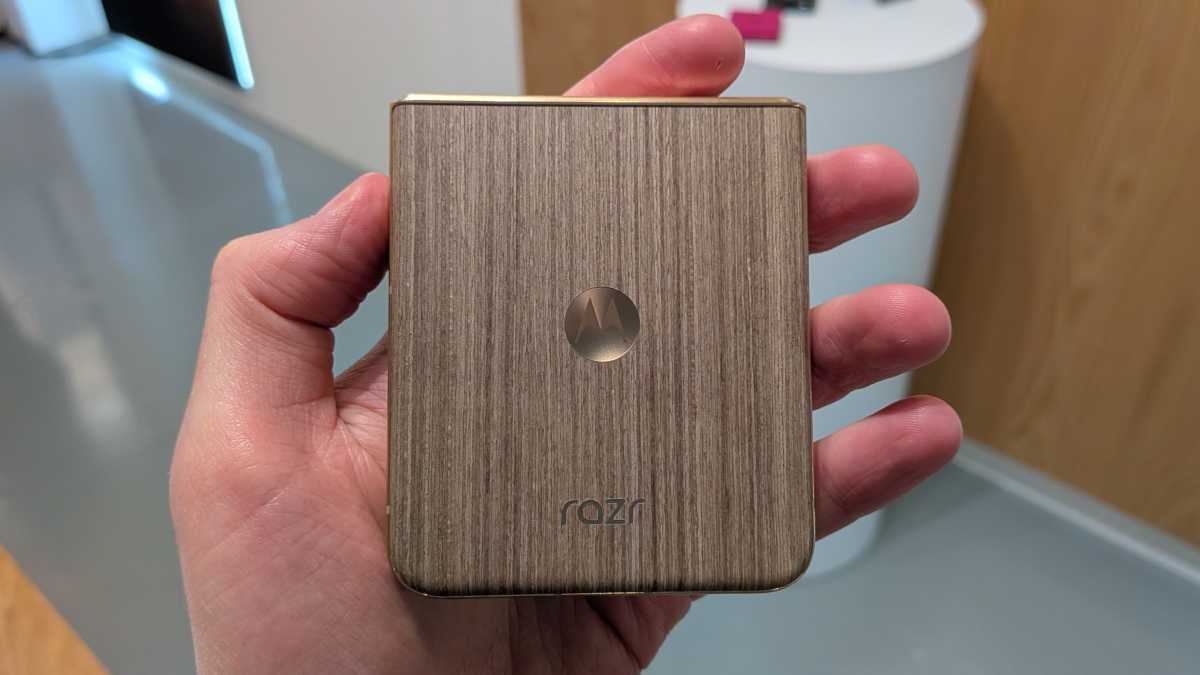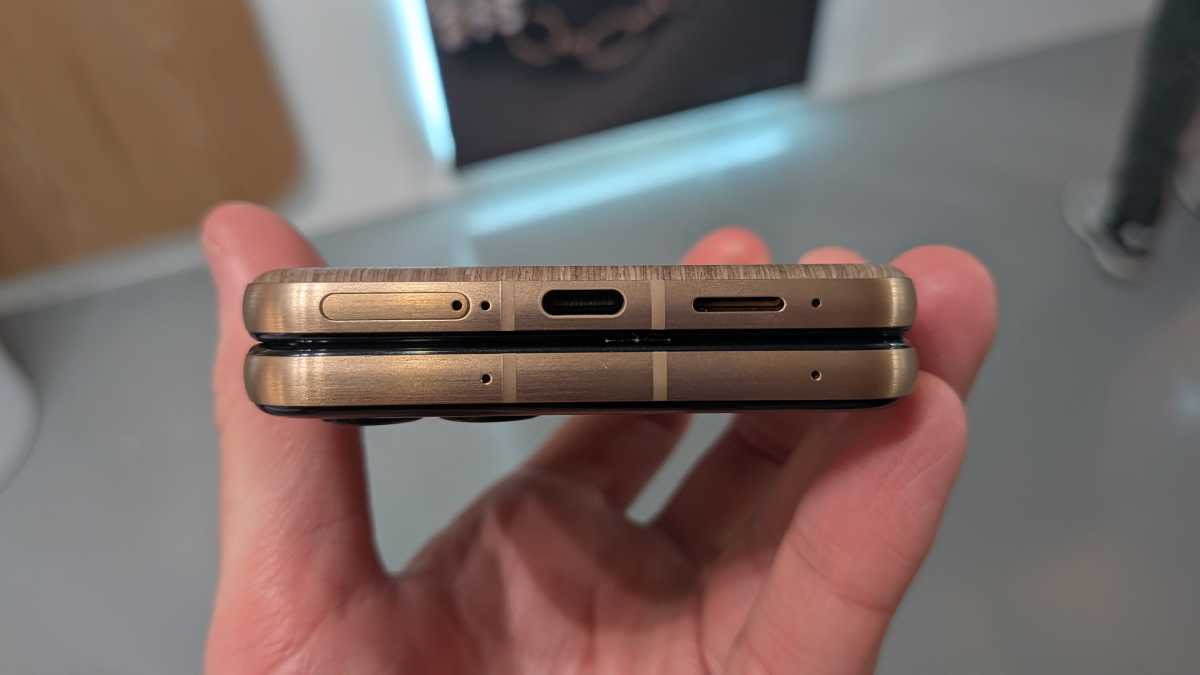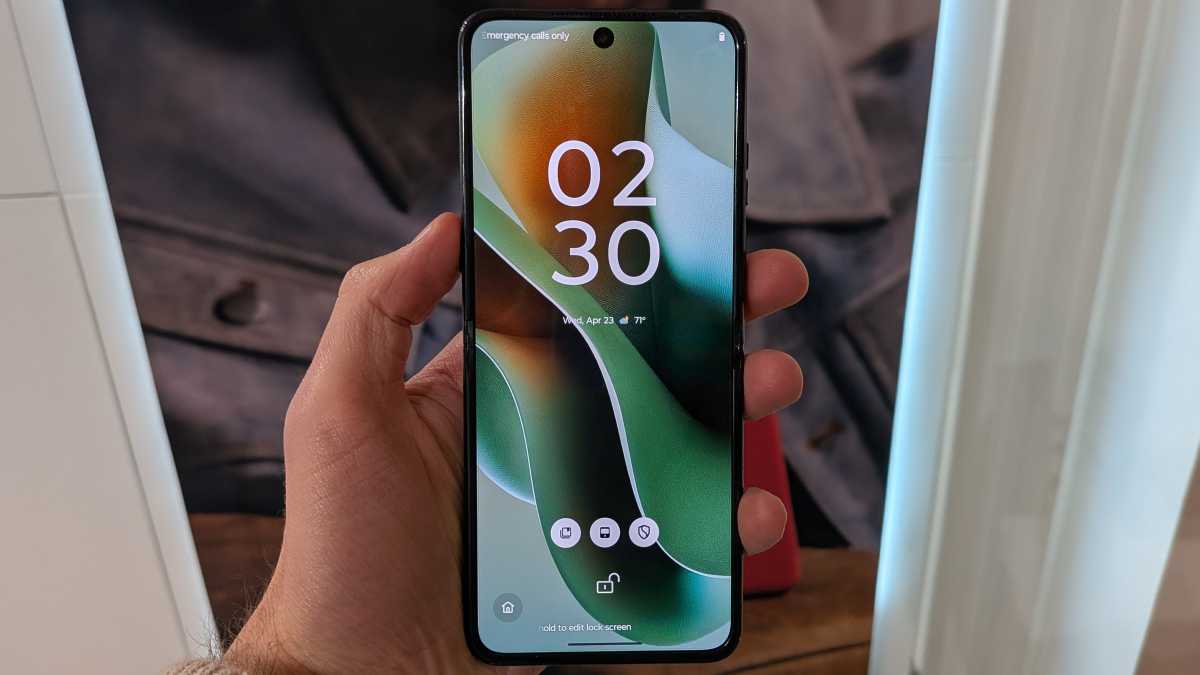I love a good flip phone. Maybe I’m too influenced by the nostalgia of classic 2000s handsets, but something about them is still so cool to me.
In the modern folding phone era, two brands dominate the flip phone conversation: Samsung and Motorola. The latter might not have the same clout as its Korean counterpart, but arguably has the upper hand when it comes to devices.
Last year, we ranked the Razr 50 Ultra, not the Galaxy Z Flip 6, as the best flip phone of the year. In 2025, Motorola has introduced a slew of upgrades for the new Razr 60 Ultra that allow it to compete with non-folding flagship phones, at least on the spec sheet.
And crucially, hands-on time with the 60 Ultra at the launch event in New York suggests Motorola has extended its lead as the best flip phone you can buy. Here are the six biggest things I’ve learned about the phone so far.
What a finish
Unique phone finishes are nothing new for Motorola, but the Razr 60 Ultra takes things to the next level.
There are four to choose from, with the highlight being ‘Scarab’, a gorgeous Alcantara finish that I was immediately drawn to. It’s the first time we’ve seen the material used on a phone, and I hope it’s the first of many – the soft fabric is the perfect antidote to a metal or plastic phone. However, it does attract more dust and dirt than most phones.
Equally eye-catching is ‘Mountain Trail’, which is made from FSC-certified wood. I love the fact natural materials are being used on phones, and it’s a surprisingly practical choice, adding grip and a useful extra layer of protection. It also just looks really cool.

Anyron Copeman / Foundry
Camera downgrade? Think again
For many people, the camera hardware on the Razr 60 Ultra will be inferior to last year’s Razr 50 Ultra. While the 50Mp main rear lens remains, Motorola has replaced the 50Mp 2x telephoto with a 50Mp ultrawide.
Sure, the 122-degree field of view is useful, and initial testing suggests image quality is broadly in line with the main lens. But at the cost of genuine zoom capability? It’s not a trade-off most people would be willing to make.
However, Motorola has a solution…
The company claims it can use Moto AI and its photo enhancement engine to offer a 2x optical zoom effect using the main lens. I was sceptical, but after trying it out, I can confirm that 2x shots are almost identical in quality to 1x. Suddenly, the lack of a telephoto lens doesn’t feel like as big a deal.
And with the addition of the ultrawide, which also enables detailed close-up macro photos, the Razr 60 Ultra’s camera system is much more versatile than its predecessor. I’m not saying it’ll be able to compete with the best camera phones around, but early signs point to a nice upgrade rather than any downgrade.
Built-in AI, literally
In 2025, artificial intelligence is nothing new. In many ways, the new Moto AI features on the Razr 60 Ultra represent Motorola catching up with the competition.
However, something you won’t find on any other phone is a dedicated physical button for the feature. The Moto AI Key is located on the left side of the device, offering easy access to the company’s suite of AI features.
While I’m not a massive fan of AI on phones, offering such easy access to key features makes a lot more sense than hiding it away. People will end up actually using Moto AI, which includes some genuinely useful features.
Existing features such as Catch Me Up (summarises missed calls and notifications), Pay Attention (starts audio recording and transcription) and Remember This (captures screenshots, photos and notes for later recall) can all be useful.
However, Next Move puts intelligent AI features front and centre. It can recognise the content on your screen and offer intelligent suggestions, whether it’s saving key details or researching further via the Perplexity AI integration.
You can also use it to create gen AI images as ChatGPT and rivals can in Image Studio, or even a bespoke selection of songs via Playlist Studio. During my demo, Next Move hilariously created a playlist based on a recipe for garlic butter salmon.
Alongside the dedicated button, Moto AI can be triggered using eye contact or your voice while in stand or tent modes, enabling true hands-free interaction.
True flagship performance
While Razr flip phones have always offered strong performance, they’ve typically been a step down from the absolute latest and greatest when it comes to chipset. The Razr 50 Ultra is powered by the Snapdragon 8s Gen 3, for example, and the original foldable Razr back in 2019 had the awkward issue of running a mid-range Snapdragon 710.
However, that’s not the case with the Razr 60 Ultra. It uses the Snapdragon 8 Elite, Qualcomm’s top-of-the-line chip, plus a generous 16GB of RAM. Performance during my hands-on time was predictably excellent, and I’d suspect it could be a potent gaming device, too.
It means the Razr can finally go head-to-head with the Galaxy Z Flip when it comes to performance.
Dust protection…sort of
One of the Razr 50 Ultra’s key design flaws was its complete lack of dust resistance. The IPX8 rating protected it against submersion in water, but not solid particles.
This has been dramatically improved on the 60 Ultra, which has been upgraded to IP48. This officially protects it against objects larger than 1mm, though stops short of the IP68 we see on many non-folding phones. I still wouldn’t recommend taking it to the beach.

Anyron Copeman / Foundry
Putting on a great display(s)
Neither of the displays on the Razr 60 Ultra offer any major upgrades. The external cover screen remains a 4-inch, 165Hz pOLED, while the internal AMOLED display is marginally larger at 7-inches and also 165Hz.

Anyron Copeman / Foundry
However, during my hands-on time, I couldn’t ignore just how good the panels were. Both offer the rich, vibrant colours and deep blacks we’ve come to associate with OLEDs, while Full HD+ resolutions ensure detail is still excellent.

Anyron Copeman / Foundry
I’d be very happy to use the displays for everything from catching up with the news to watching YouTube videos and even gaming.
Don’t forget about the battery!
Of course, I wasn’t able to test this during the hands-on time, but Motorola hasn’t been shy when it comes to upgrading the Razr 60 Ultra’s battery.
It’s equipped with a 4700mAh cell, up from 4000mAh on the 50 Ultra. That’s a massive increase, especially when battery life was already decent. I’m really hoping that might mean two days on a single charge, at least on those non-heavy usage days.
Charging has also received a nice boost, with wired speeds going from 45- to 68W. Motorola claims you can get enough power for a day after just eight minutes, though it’s not clear what battery percentage that equates to.

Anyron Copeman / Foundry
There’s no charger in the box, but that’s hardly surprising for a 2025 phone. Meanwhile, 30W wireless and 5W reverse wireless charging make the Razr 60 Ultra an impressive all-rounder.
As you can see, my early impressions of the Razr 60 Ultra are very positive. If it’s a similar story throughout my testing, it’s likely to be easy to recommend.
However, the £1,099.99 starting price (US pricing TBC) makes it more expensive in the UK than the £1,049/$1,099.99 Galaxy Z Flip 6. Sales will start from 24 April in selected countries.
Read our Motorola Edge 60 Pro hands-on next.
Motorola hosted my trip to New York. I accepted, as there were no alternative ways to get hands-on time with the Razr 60 Ultra at launch. There were no preconditions on what I write or how I evaluate the device.




